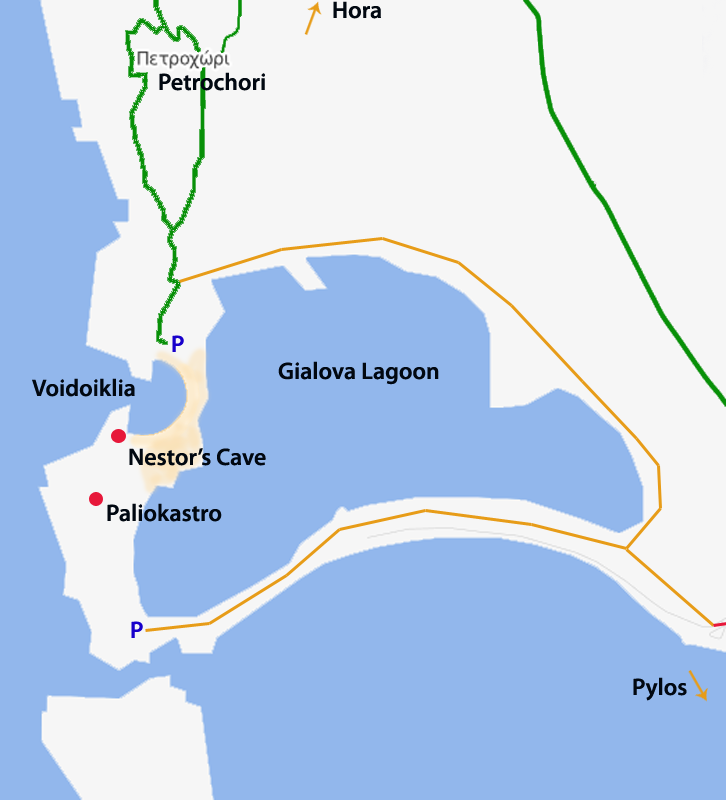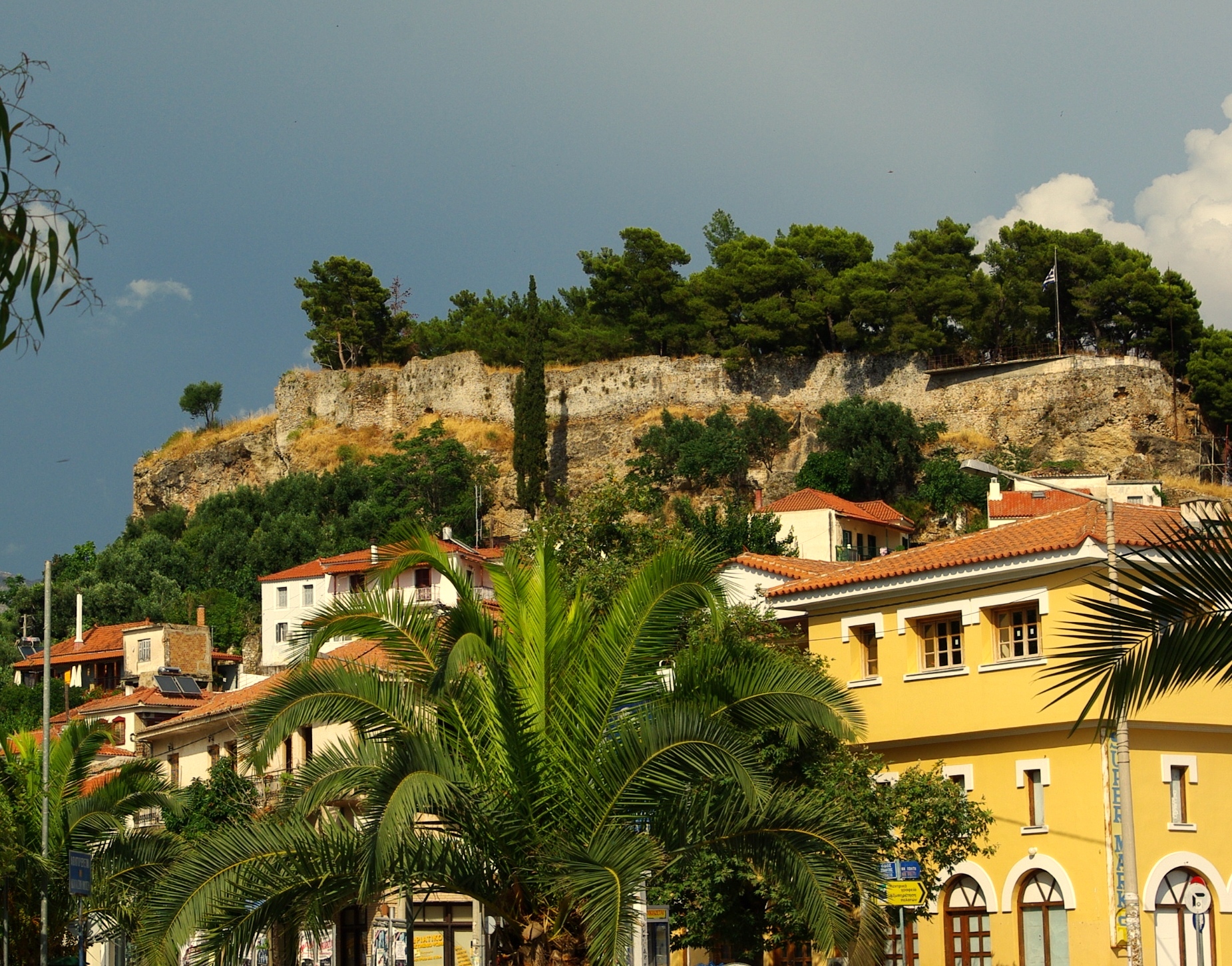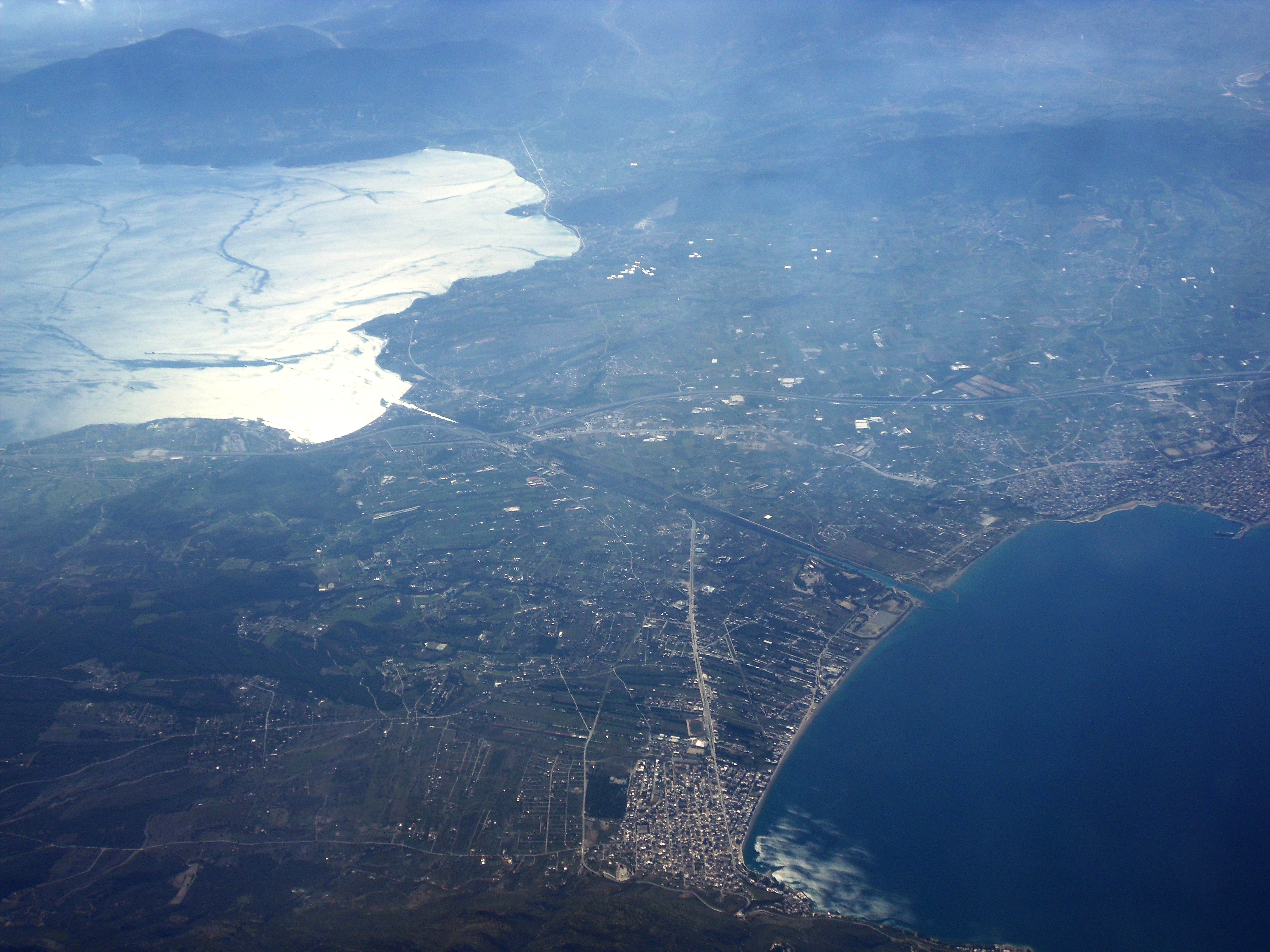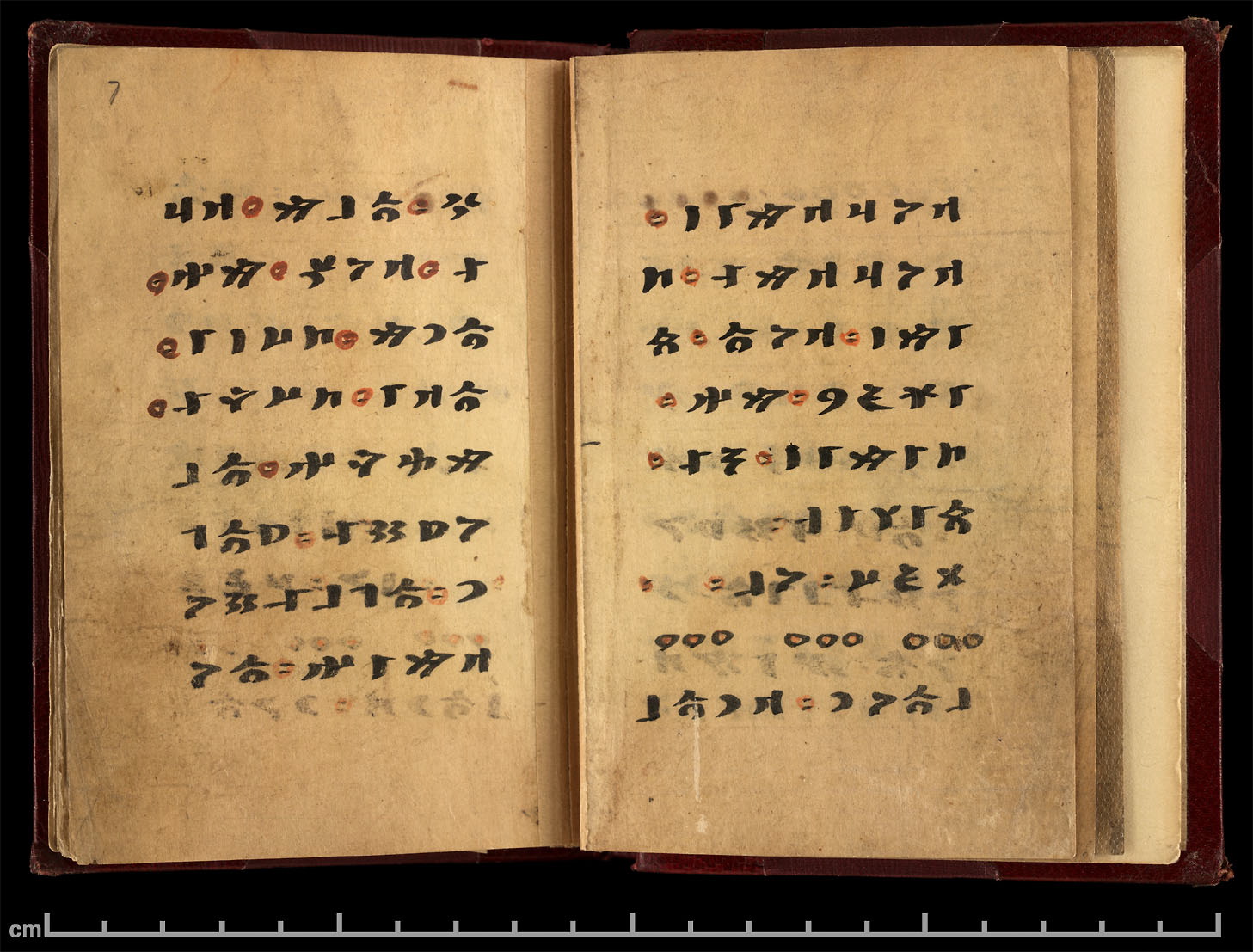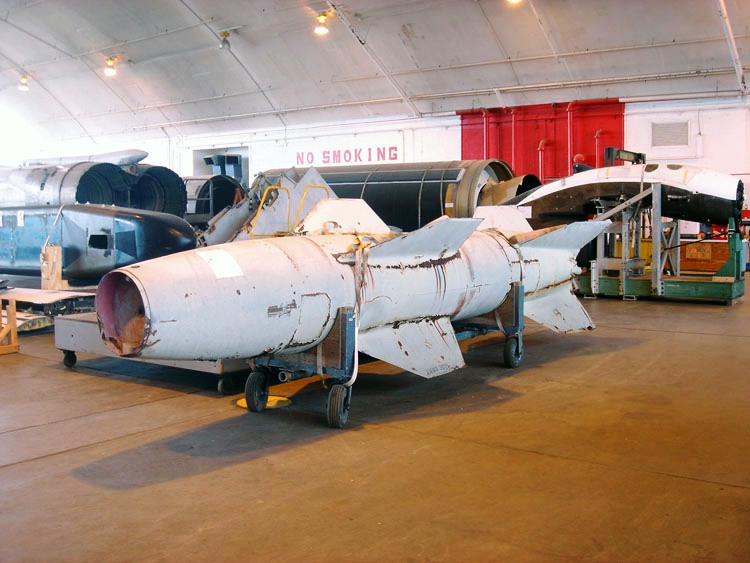|
Gialova
Gialova (Greek: Γιάλοβα) is a village on Navarino Bay in the municipality of Pylos-Nestor in the regional unit of Messenia in the south-west Peloponnese, Greece, about six kilometres north of Pylos. The name derives from Greek γιαλός (shore) and Turkish ova (lowland), i.e. "lowland shore". Topography The village is in two parts. The beach/port part of the village consists of two short streets, one fronting the Bay and the other at right angles to it, leading to the main Pylos-Kiparissia road. This part is largely touristic - bars and restaurants, shops, and the one hotel. Where the two streets meet there is a mole used by local fishing boats (and for car parking). The other, residential and commercial part of the village is about 1km further north along the Pylos-Kiparissia road. The modern development of Gialova also includes several houses and holiday villas on the hill behind Gialova, called Dapia (Greek: Ντάπια). Population The area of Gialova was fi ... [...More Info...] [...Related Items...] OR: [Wikipedia] [Google] [Baidu] |
Pylos
Pylos (, ; el, Πύλος), historically also known as Navarino, is a town and a former municipality in Messenia, Peloponnese, Greece. Since the 2011 local government reform, it has been part of the municipality Pylos-Nestoras, of which it is the seat and a municipal unit. It was the capital of the former Pylia Province. It is the main harbour on the Bay of Navarino. Nearby villages include Gialova, Pyla, Elaiofyto, Schinolakka, and Palaionero. The town of Pylos has 2,345 inhabitants, the municipal unit of Pylos 5,287 (2011). The municipal unit has an area of 143.911 km2. Pylos has been inhabited since Neolithic times. It was a significant kingdom in Mycenaean Greece, with remains of the so-called " Palace of Nestor" excavated nearby, named after Nestor, the king of Pylos in Homer's ''Iliad''. In Classical times, the site was uninhabited, but became the site of the Battle of Pylos in 425 BC, during the Peloponnesian War. After that, Pylos is scarcely mentioned unti ... [...More Info...] [...Related Items...] OR: [Wikipedia] [Google] [Baidu] |
Gialova Lagoon
Gialova Lagoon ( el, Γιάλοβα, ) – also known as Divari, from the Latin word ''vivarium'', meaning "fishery" – is a brackish body of water in the municipality of Pylos-Nestor, Greece, about north of Pylos. The lagoon, together with Voidokilia Bay, belongs to a unique ecosystem which constitutes a protected zone, in terms of both natural and cultural heritage. From the natural point of view, the entire area, together with Navarino Bay and the island of Sphacteria, forms part of the network Natura 2000 and has been named a Zone of Special Protection, with code GR2550008, and an Area of EU Importance, with code GR2550004. Fauna It serves as a wildlife habitat, particularly for migratory birds, which stop here first on their way from Africa to Northern Europe. A multitude of mammals, reptiles, amphibians and fish live there. Prominent among them is the African Chamelaeon, which is threatened by extinction. It is thought that this species came to the region during ... [...More Info...] [...Related Items...] OR: [Wikipedia] [Google] [Baidu] |
Voidokilia
Voidokilia Beach ( el, Παραλία Βοϊδοκοιλιά, ) is a popular beach in Messinia in the Mediterranean area. In the shape of the Greek letter omega (Ω), its sand forms a semicircular strip of dunes. On the land-facing side of the strip of dunes is Gialova Lagoon, an important bird habitat. The beach has been named "A Place of Particular Natural Beauty". It is part of a Natura 2000 protected area. Location A hiking route begins from Voidokoilia. The climb towards Nestor's Cave begins at the south-west end of the beach, while after the cave the route continues towards Paliokastro. Voidokilia is next to Petrohori in Messinia, Greece. Though the ruins are not fenced off, the castle ruins are sign-posted as closed and tourists walk through the castle or around the walls at their own risk. Gialova's aquatic habitat, being an important stop for a variety of migratory birds, has been declared the southernmost Habitat of National Importance in the Balkans. It is consider ... [...More Info...] [...Related Items...] OR: [Wikipedia] [Google] [Baidu] |
Greek Language
Greek ( el, label= Modern Greek, Ελληνικά, Elliniká, ; grc, Ἑλληνική, Hellēnikḗ) is an independent branch of the Indo-European family of languages, native to Greece, Cyprus, southern Italy (Calabria and Salento), southern Albania, and other regions of the Balkans, the Black Sea coast, Asia Minor, and the Eastern Mediterranean. It has the longest documented history of any Indo-European language, spanning at least 3,400 years of written records. Its writing system is the Greek alphabet, which has been used for approximately 2,800 years; previously, Greek was recorded in writing systems such as Linear B and the Cypriot syllabary. The alphabet arose from the Phoenician script and was in turn the basis of the Latin, Cyrillic, Armenian, Coptic, Gothic, and many other writing systems. The Greek language holds a very important place in the history of the Western world. Beginning with the epics of Homer, ancient Greek literature includes many works of l ... [...More Info...] [...Related Items...] OR: [Wikipedia] [Google] [Baidu] |
Pylos-Nestor
Pylos-Nestoras ( el, Δήμος Πύλου - Νέστορος) is a municipality in the Messenia regional unit, Peloponnese, Greece. The seat of the municipality is the town Pylos. The municipality has an area of 554.265 km2. Municipality The municipality Pylos-Nestoras was formed at the 2011 local government reform by the merger of the following 6 former municipalities, that became municipal units: * Chiliochoria * Koroni * Methoni *Nestor Nestor may refer to: * Nestor (mythology), King of Pylos in Greek mythology Arts and entertainment * "Nestor" (''Ulysses'' episode) an episode in James Joyce's novel ''Ulysses'' * Nestor Studios, first-ever motion picture studio in Hollywood, L ... * Papaflessas * Pylos References Municipalities of Peloponnese (region) Populated places in Messenia {{Peloponnese-geo-stub ... [...More Info...] [...Related Items...] OR: [Wikipedia] [Google] [Baidu] |
Messenia
Messenia or Messinia ( ; el, Μεσσηνία ) is a regional unit (''perifereiaki enotita'') in the southwestern part of the Peloponnese region, in Greece. Until the implementation of the Kallikratis plan on 1 January 2011, Messenia was a prefecture (''nomos'') covering the same territory. The capital and largest city of Messenia is Kalamata. Geography Physical Messenia borders on Elis to the north, Arcadia to the northeast, and Laconia to the southeast. The Ionian Sea lies to the west, and the Gulf of Messinia to the south. The most important mountain ranges are the Taygetus in the east, the Kyparissia mountains in the northwest and the Lykodimo in the southwest. The main rivers are the Neda in the north and the Pamisos in central Messenia. Off the south coast of the southwesternmost point of Messenia lie the Messinian Oinousses islands. The largest of these are Sapientza, Schiza and Venetiko. The small island Sphacteria closes off the bay of Pylos. All thes ... [...More Info...] [...Related Items...] OR: [Wikipedia] [Google] [Baidu] |
Peloponnese
The Peloponnese (), Peloponnesus (; el, Πελοπόννησος, Pelopónnēsos,(), or Morea is a peninsula and geographic region in southern Greece. It is connected to the central part of the country by the Isthmus of Corinth land bridge which separates the Gulf of Corinth from the Saronic Gulf. From the late Middle Ages until the 19th century the peninsula was known as the Morea ( grc-x-byzant, Μωρέας), (Morèas) a name still in colloquial use in its demotic form ( el, Μωριάς, links=no), (Moriàs). The peninsula is divided among three administrative regions: most belongs to the Peloponnese region, with smaller parts belonging to the West Greece and Attica regions. Geography The Peloponnese is a peninsula located at the southern tip of the mainland, in area, and constitutes the southernmost part of mainland Greece. It is connected to the mainland by the Isthmus of Corinth, where the Corinth Canal was constructed in 1893. However, it is also connected ... [...More Info...] [...Related Items...] OR: [Wikipedia] [Google] [Baidu] |
Greece
Greece,, or , romanized: ', officially the Hellenic Republic, is a country in Southeast Europe. It is situated on the southern tip of the Balkans, and is located at the crossroads of Europe, Asia, and Africa. Greece shares land borders with Albania to the northwest, North Macedonia and Bulgaria to the north, and Turkey to the northeast. The Aegean Sea lies to the east of the mainland, the Ionian Sea to the west, and the Sea of Crete and the Mediterranean Sea to the south. Greece has the longest coastline on the Mediterranean Basin, featuring thousands of islands. The country consists of nine traditional geographic regions, and has a population of approximately 10.4 million. Athens is the nation's capital and largest city, followed by Thessaloniki and Patras. Greece is considered the cradle of Western civilization, being the birthplace of democracy, Western philosophy, Western literature, historiography, political science, major scientific and mathematical p ... [...More Info...] [...Related Items...] OR: [Wikipedia] [Google] [Baidu] |
Turkish Language
Turkish ( , ), also referred to as Turkish of Turkey (''Türkiye Türkçesi''), is the most widely spoken of the Turkic languages, with around 80 to 90 million speakers. It is the national language of Turkey and Northern Cyprus. Significant smaller groups of Turkish speakers also exist in Iraq, Syria, Germany, Austria, Bulgaria, North Macedonia, Greece, the Caucasus, and other parts of Europe and Central Asia. Cyprus has requested the European Union to add Turkish as an official language, even though Turkey is not a member state. Turkish is the 13th most spoken language in the world. To the west, the influence of Ottoman Turkish—the variety of the Turkish language that was used as the administrative and literary language of the Ottoman Empire—spread as the Ottoman Empire expanded. In 1928, as one of Atatürk's Reforms in the early years of the Republic of Turkey, the Ottoman Turkish alphabet was replaced with a Latin alphabet. The distinctive characteristics of the Turk ... [...More Info...] [...Related Items...] OR: [Wikipedia] [Google] [Baidu] |
Wasserfall Kalamari Katarakt Bei Gialova 1
The ''Wasserfall Ferngelenkte FlaRakete'' (Waterfall Remote-Controlled A-A Rocket) was a German guided supersonic surface-to-air missile project of World War II. Development was not completed before the end of the war and it was not used operationally. The system was based on many of the technologies developed for the V-2 rocket program, including the rocket itself, which was essentially a much scaled-down version of the V-2 airframe. The rocket motor used new fuels as it was expected to be stored in ready-to-fire form for months, and the guidance system used external fins for control instead of relying entirely on the steerable rocket motor exhaust. Among the many development problems, control of the high-speed rocket was a significant concern, leading to the development of a radio control system where the operator sat in a reclining chair so they could see the target as it passed overhead. Another significant problem was the lack of a suitable proximity fuse, which was requir ... [...More Info...] [...Related Items...] OR: [Wikipedia] [Google] [Baidu] |
Mole (architecture)
A mole is a massive structure, usually of stone, used as a pier, breakwater, or a causeway separating two bodies of water. The word comes from Middle French ''mole'', ultimately from Latin ''mōlēs'', meaning a large mass, especially of rock; it has the same root as molecule and mole, the chemical unit of measurement. A mole may have a wooden structure built on top of it that resembles a wooden pier. The defining feature of a mole, however, is that water cannot freely flow underneath it, unlike a true pier. The oldest known mole is at Wadi al-Jarf, an ancient Egyptian harbor complex on the Red Sea, constructed ca. 2500 BCE. San Francisco Bay Area In the San Francisco Bay Area in California, there were several moles, combined causeways and wooden piers or trestles extending from the eastern shore and utilized by various railroads, such as the Key System, Southern Pacific Railroad (two), and Western Pacific Railroad: the Alameda Mole, the Oakland Mole, and the Western Pa ... [...More Info...] [...Related Items...] OR: [Wikipedia] [Google] [Baidu] |
Old Navarino Castle
The Old Navarino castle ( el, Παλαιό Ναυαρίνο) is a 13th-century Frankish fortress near Pylos, Greece. It is one of two castles guarding the strategic bay on which it sits; the other is the Ottoman-built New Navarino fortress. In juxtaposition with the latter, it is frequently known simply as Palaiokastro or Paliokastro ( el, Παλαιόκαστρο or Παλιόκαστρο, "old castle"). It occupies the site of the Athenian fort at the 425 BC Battle of Pylos. Name In Frankish times, it was known as ''Port-de-Jonc'' ("Cane Harbour") or ''Port-de-Junch'' in French, with some variants and derivatives: in Italian ''Porto-Junco'', ''Zunchio'' or ''Zonchio'', in medieval Catalan ''Port Jonc'', in Latin ''Iuncum'', ''Zonglon/Zonglos'' (Ζόγγλον/ς or Ζόγκλον/ς) in Greek, etc. In the late 14th/early 15th centuries, when it was held by the Navarrese Company, it was also known as ''Château Navarres'', and called ''Spanochori'' (Σπανοχώρι, "village o ... [...More Info...] [...Related Items...] OR: [Wikipedia] [Google] [Baidu] |

